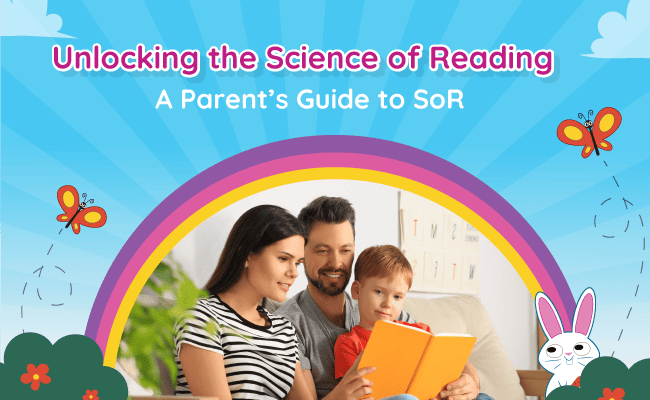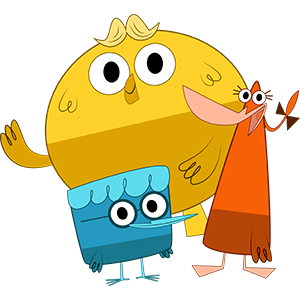Let’s take a look at what the Science of Reading is and how it is crucial for you to know as a parent.
The Science of Reading (SoR) is an evidence-based approach to teaching reading that draws on research from various fields such as cognitive psychology, linguistics, and neuroscience. Understanding it is important for parents to support their children’s literacy development effectively. In this blog, we break down the key components of the Science of Reading with examples.
Understanding the Building Blocks:
- Phonemic Awareness:
Phonemic awareness refers to the ability to identify and manipulate individual sounds, or phonemes, in spoken language. It’s a foundational skill for reading because it helps children understand that words are made up of individual sounds. Parents can support phonemic awareness development through activities such as rhyming games, sound blending, and segmenting words into individual sounds.
Example: While reading a book together, ask your child to identify words that rhyme (e.g., cat, hat). Practice breaking words into individual sounds (e.g., “cat” has three sounds: /k/ /a/ /t/).
- Phonics Instruction:
Phonics involves connecting sounds to letters and understanding the relationship between letters and their corresponding sounds. This helps children decode, or sound out, words when reading. Parents can reinforce phonics skills by pointing out letter-sound correspondences in everyday situations, practicing letter formation, and using multisensory techniques such as tracing letters in sand or shaving cream.
Example: Write out simple words on index cards (e.g., “cat,” “dog”) and ask your child to sound out each letter as they read the word. Encourage them to blend the sounds together to read the word aloud.
- Vocabulary Development:
Vocabulary knowledge plays a crucial role in reading comprehension. Children need to understand the meaning of words to comprehend what they’re reading. Parents can support vocabulary development by introducing new words during everyday conversations, reading aloud, and providing opportunities for children to encounter and use new words in context.
Example: While reading a story, pause to explain the meaning of unfamiliar words. Encourage your child to use context clues or illustrations to infer the meaning of unfamiliar words. For example, if the story mentions “gigantic,” ask your child what they think “gigantic” means based on the size of the object described.
- Fluency:
Fluency refers to the ability to read text accurately, quickly, and with expression. Fluent readers can focus on comprehension because they no longer need to devote all their attention to decoding individual words. Parents can help improve fluency by modeling fluent reading, providing opportunities for repeated reading, and encouraging expression and intonation while reading aloud.
Example: Take turns reading a passage aloud with your child. Model fluent reading by reading the passage first, then have your child read the same passage while focusing on accuracy, speed, and expression.
- Comprehension:
Comprehension is the ultimate goal of reading—to understand and make meaning from text. It involves not only decoding words but also understanding the author’s message, making inferences, and connecting ideas. Parents can support comprehension by asking questions before, during, and after reading, discussing the main ideas and details of a text, and encouraging critical thinking skills.
Example: Before reading a book, ask your child to make predictions about what they think will happen based on the title and cover. During reading, pause to ask questions about the story, such as “Why do you think the character did that?” After reading, discuss the main events and ask your child to summarize the story in their own words
Explore the Exciting World of SKIDOS IRIS:
A Journey to Reading Success
SKIDOS IRIS is an innovative learning game meticulously crafted to ignite your child’s passion for reading while refining fundamental literacy abilities. Immerse your child in a thrilling treasure hunt guided by the affable digital companion, Neta, as they delve into the realms of phonics, expand their vocabulary, and enhance comprehension skills in an immersive and engaging experience.
Rooted in the principles of the science of reading, IRIS provides a dynamic and interactive platform where children can keep learning in a delightful and stimulating manner. With over 125+ learning activities including songs, videos, animated stories, and tracing lessons, it is the perfect first-readers game to develop literacy skills!
In conclusion, the Science of Reading provides parents with evidence-based strategies to support their children’s literacy development. By understanding and implementing the key components of the Science of Reading—such as phonemic awareness, phonics, vocabulary development, fluency, comprehension, and explicit instruction—parents can help their children become proficient readers who can decode words accurately, comprehend what they read, and enjoy a lifelong love of reading.


